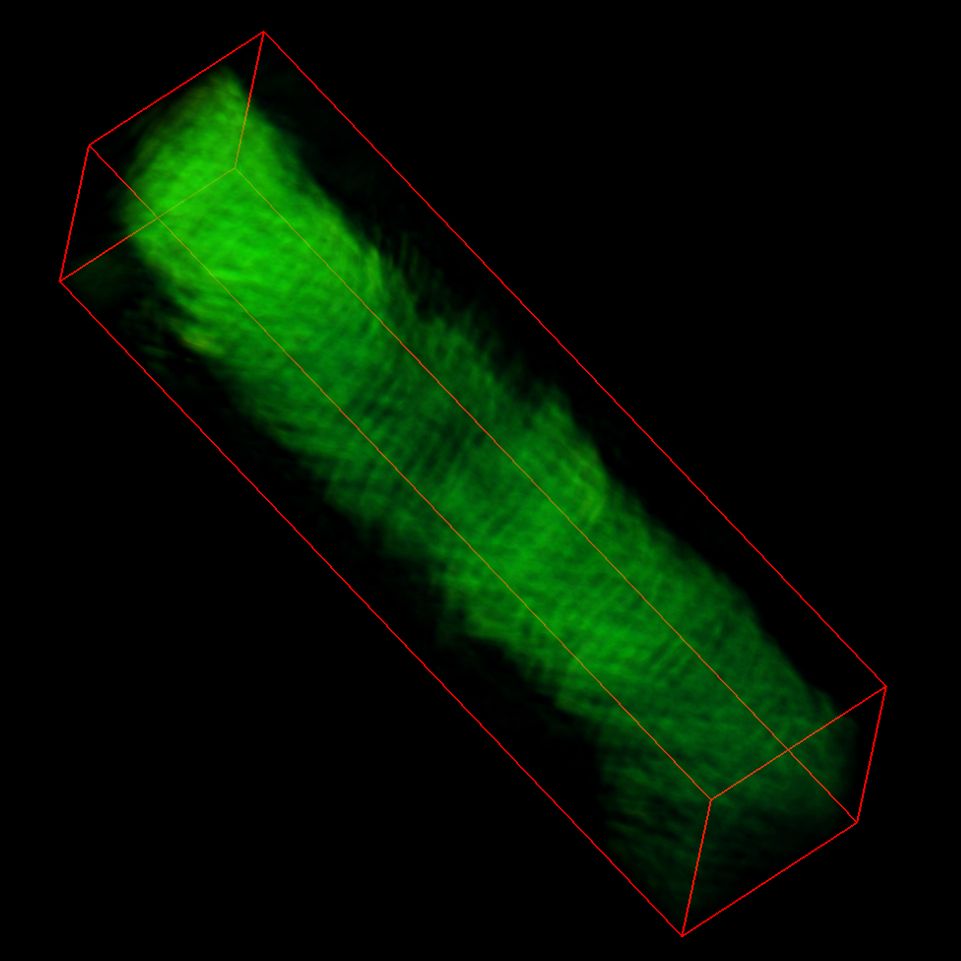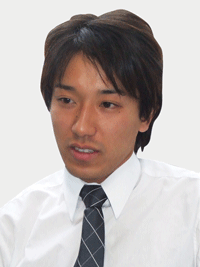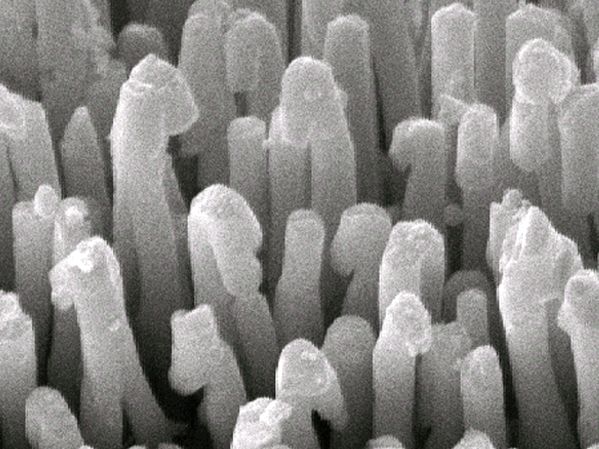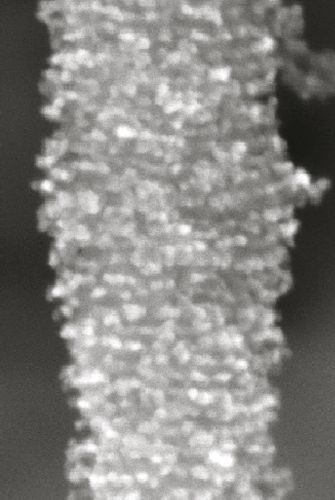Mesoporous Metal Fiber
Mesoporous Materials from Silica to Metals
Mar. 28, 2008
A group led by Dr. Yusuke Yamauchi, a MANA independent scientist at the International Center for Materials Nanoarchitectonics (MANA), National Institute of Materials Science (NIMS), in joint work with a group under Prof. Kazuyuki Kuroda of the Advanced Research Institute for Science and Engineering, Waseda University, succeeded in synthesizing metal fibers with unique meso (nano) spaces by applying a surfactant) self-assembly process using anodic porous alumina as a mold.
High expectations are placed on mesoporous materials, which have a regular arrangement of fine pores with diameters of several nanometers, and thus possess a high surface specific area, as materials that offer a new field for chemical reactions which were not possible in the past. From this viewpoint, active research and development are underway, focusing on catalyst materials, adsorbents, and various other applications. In recent years, it has become possible to synthesize mesoporous metals with a metal matrix using electrochemical methods. However, these materials had various problems, in that the structure of conventional mesoporous metals was inferior in regularity, control of the alignment and form of mesopores at the macroscopic level was difficult, etc.

Electron beam tomography of mesoporous platinum fibers
In order to overcome these problems, Dr. Yamauchi and the researchers under Prof. Kuroda synthesized metal fibers with mesopores by the following method. Using anodic porous alumina as a mold, regular assemblies of a surfactant are formed by a self-assembly process in the macropores. Next, a metal (platinum) is deposited by an electrochemical process (plating technique). Finally, metal fibers containing mesopores are formed by removing the anodic porous alumina and surfactant. By electron beam tomography, it was found that the mesopores are aligned perpendicular to the longitudinal axis of the fiber, and have a stacked donut (annular) shaped structure.
Because metal fibers with this regular mesoporous structure have a large surface area and are formed from a matrix consisting of only metal, an electrochemically wide range of applications which were not possible with the conventional silica mesoporous materials is expected. Furthermore, these metal fiber assemblies have a hierarchical structure in which spaces of different sizes exist in the form of macro spaces between fibers and mesospaces in the fibers, and have a structure in which diverse substances can be introduced from outside. Therefore, if this material is used as an electrode, etc., the substances which is introduced can be diffused extremely rapidly. Applications of this technology are not limited to platinum. Because the technique can also be applied to virtually all metals and alloy systems, development of a wide variety of applications, including biosensing, fuel cells, capacitors, etc. can be expected by modifying the composition of the metal matrix.
These research results were be published in “Pt Fibers with Stacked Donut-Like Mesospace by Assembling Pt Nanoparticles: Guided Deposition in Physically Confined Self-Assembly of Surfactants,” Journal of the American Chemical Society, 2008, 130(16): 5426-5427.
National Institute for Materials Science (NIMS)
For more information

- Yusuke YAMAUCHI
- MANA Young Scientist
- International Center for
- Materials Nanoarchitectonics (MANA)
- NIMS
- Tel. +81-29-860-4635
- Fax. +81-29-860-4721
- E-Mail :

- International Center for Materials Nanoarchitectonics (MANA), NIMS
- Tel. +81-29-860-4709
- Fax. +81-29-860-4706
Press Release Success in Synthesis of Mesoporous Metal Fiber on NIMS Website










